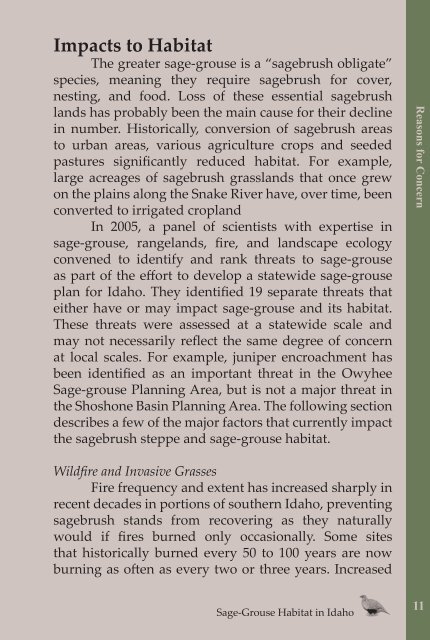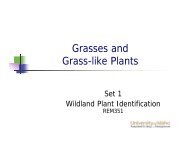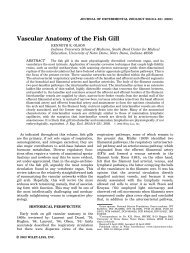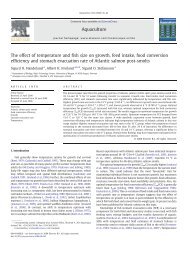Sage-grouse Habitat in Idaho - College of Natural Resources ...
Sage-grouse Habitat in Idaho - College of Natural Resources ...
Sage-grouse Habitat in Idaho - College of Natural Resources ...
You also want an ePaper? Increase the reach of your titles
YUMPU automatically turns print PDFs into web optimized ePapers that Google loves.
Impacts to <strong>Habitat</strong><br />
The greater sage-<strong>grouse</strong> is a “sagebrush obligate”<br />
species, mean<strong>in</strong>g they require sagebrush for cover,<br />
nest<strong>in</strong>g, and food. Loss <strong>of</strong> these essential sagebrush<br />
lands has probably been the ma<strong>in</strong> cause for their decl<strong>in</strong>e<br />
<strong>in</strong> number. Historically, conversion <strong>of</strong> sagebrush areas<br />
to urban areas, various agriculture crops and seeded<br />
pastures significantly reduced habitat. For example,<br />
large acreages <strong>of</strong> sagebrush grasslands that once grew<br />
on the pla<strong>in</strong>s along the Snake River have, over time, been<br />
converted to irrigated cropland<br />
In 2005, a panel <strong>of</strong> scientists with expertise <strong>in</strong><br />
sage-<strong>grouse</strong>, rangelands, fire, and landscape ecology<br />
convened to identify and rank threats to sage-<strong>grouse</strong><br />
as part <strong>of</strong> the effort to develop a statewide sage-<strong>grouse</strong><br />
plan for <strong>Idaho</strong>. They identified 19 separate threats that<br />
either have or may impact sage-<strong>grouse</strong> and its habitat.<br />
These threats were assessed at a statewide scale and<br />
may not necessarily reflect the same degree <strong>of</strong> concern<br />
at local scales. For example, juniper encroachment has<br />
been identified as an important threat <strong>in</strong> the Owyhee<br />
<strong>Sage</strong>-<strong>grouse</strong> Plann<strong>in</strong>g Area, but is not a major threat <strong>in</strong><br />
the Shoshone Bas<strong>in</strong> Plann<strong>in</strong>g Area. The follow<strong>in</strong>g section<br />
describes a few <strong>of</strong> the major factors that currently impact<br />
the sagebrush steppe and sage-<strong>grouse</strong> habitat.<br />
Wildfire and Invasive Grasses<br />
Fire frequency and extent has <strong>in</strong>creased sharply <strong>in</strong><br />
recent decades <strong>in</strong> portions <strong>of</strong> southern <strong>Idaho</strong>, prevent<strong>in</strong>g<br />
sagebrush stands from recover<strong>in</strong>g as they naturally<br />
would if fires burned only occasionally. Some sites<br />
that historically burned every 50 to 100 years are now<br />
burn<strong>in</strong>g as <strong>of</strong>ten as every two or three years. Increased<br />
<strong>Sage</strong>-Grouse <strong>Habitat</strong> <strong>in</strong> <strong>Idaho</strong><br />
Reasons for Concern 11





